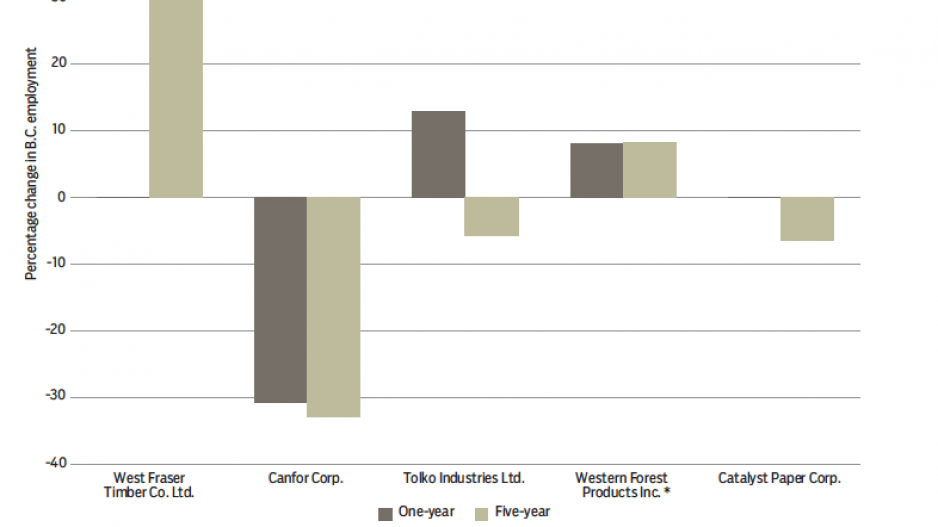Provincial employment at B.C.’s largest forestry companies has dropped 6% since 2014, according to data from Business in Vancouver’s Biggest Forestry Companies in B.C. list.
In 2018, B.C.’s largest forestry companies employed 19,776 people, a decline of 1,270 workers since 2014.
The median number of workers across the largest forestry companies also declined at a rate that was merely 0.3 percentage points higher than the average employment decline, suggesting that companies higher on the list were just as affected by employment declines as those lower on the list. However, over the five-year period, the average employee-count drop for the five largest companies on BIV’s list was only 0.07%, significantly lower than the average median employment decline of 5.76% for all companies on the list.
Canfor Corp. (TSX:CFP), ranked No. 2 on the list, saw the largest employment decline in the top five. The number of employees at the company dropped nearly 33% to 2,942 in 2018 from 4,389 in 2014. Most of the decline occurred over the past year, when the company’s provincial employment fell by 1,305 employees.
Fourth-ranked Western Forest Products Inc. (TSX:WEF) was the only company in the top five to see continuous employee growth since 2014. Western Forest Products grew its B.C. employment by 8.2% since 2014, with the vast majority of the growth occurring over the past year. However, top-ranked West Fraser Timber Co. Ltd. (TSX:WFT) had the largest five-year increase in employment despite not changing the size of its B.C. workforce in 2018. The company increased its employee count by 35.6% to 3,100 employees in 2018 from 2,270 employees in 2014.
While provincial employment has declined at B.C.’s biggest forestry companies, the same cannot be said for revenue. Based on the most recent data available, revenue at the province’s five largest publicly traded forestry companies has been steadily growing. From 2013 to 2017, revenue increased an average of 45.1%. Interfor Corp. (TSX:IFP), at No. 7 on the list, had the largest revenue increase, growing 80.1% to $1.99 billion in 2017 from $1.11 billion in 2013. •




